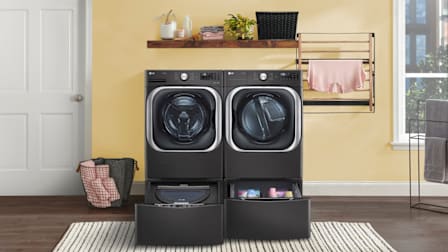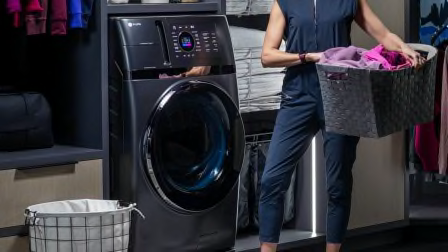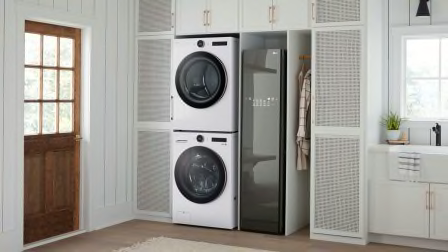Your Guide to Really Clean Clothes
CR Laundry Expert Rich Handel shares his no-nonsense advice on getting your clothes clean without breaking the bank (or your washer)
When you shop through retailer links on our site, we may earn affiliate commissions. 100% of the fees we collect are used to support our nonprofit mission. Learn more.
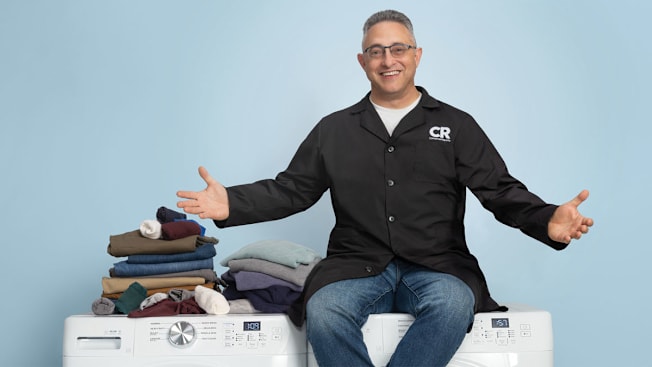
If you haven’t seen me on the CBS News “Sunday Morning” show, Instagram, or TikTok, you may have missed my best laundry advice. I’m Rich Handel, and I’ve been at Consumer Reports for more than two decades. For eight years, I’ve been testing washers, dryers, detergents, and pretty much anything else you’d find in a laundry room. I have a degree in chemistry, I dabbled in research and development, and before leaning into my role as a laundry sage, I tested all sorts of things, from diapers to electronics.
If you’ve been doing laundry for a lifetime, you probably feel like you’ve got it down. But I know a few things that could save time, money, and maybe even your favorite clothes.
Sort Like Your Clothes Depend on it—Because They Do
You already know that you don’t want to wash, say, white jeans with dark jeans—unless you’re trying for a tie-dye effect. But sorting is about more than just colors. It’s about fabric type and weight.
Even if the colors are the same, if you mix jeans with something like a delicate sweater, it’s likely that the jeans will rough up the sweater a bit in the wash, and the sweater will come out on the losing side. A simple rule is to wash like items together: towels with towels, blue jeans with blue jeans, non-blue jeans with non-blue jeans, and underwear with underwear. Similar colors, similar fabrics.
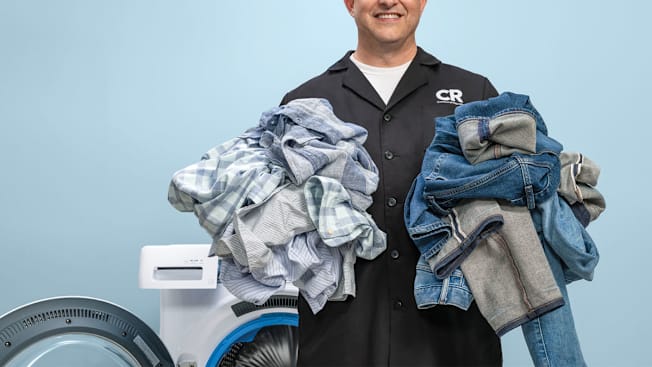
Photo: Chris Buck Photo: Chris Buck
Laundry Detergent Works as a Spot Remover
We’ve learned from our tests that the top-rated liquid detergents also work well as spot treatments. What’s really important with stains is timing. If you have a spill, blot it right away—with water, seltzer, or a towel (preferably white). Your best bet is blotting that stain while it’s still wet; you’re pulling it out just like it got in.
To pretreat before washing, dab a little detergent on the spot and gently scrub with a soft-bristle toothbrush. After washing, allow the garment to air-dry so you can make sure the stain is out, rather than sending it to the dryer. Heat sets stains and can make them difficult or impossible to remove.
Balance the Load
For the love of your washing machine, don’t mix items of totally different weights in the same load—like heavy pillows with light sheets—unless you want to be entertained by the spin-cycle tantrum of an unbalanced washer. What happens is that the pillows absorb a lot of water and get much heavier than the sheets. The next thing you know, your machine is flashing an error message and demanding you rebalance the load.
Save yourself the aggravation by balancing the load in the first place. You’ll get a better spin and less wear and tear on your laundry and your machine. Also, don’t overstuff your washer. That doesn’t allow the clothes and the detergent to circulate. Similar for the dryer—overstuffing doesn’t allow the air to circulate through the load.
Want More Tips From Rich?
Watch his popular videos.
You’re Probably Using Too Much Detergent
I’d never use more than the minimum amount of detergent for most medium loads. Now that detergent is concentrated, you only need about a shot glass worth of liquid detergent—about 3 tablespoons—to get your laundry clean.
Don’t believe me? Try it and see how it goes. Extra detergent doesn’t get clothes cleaner. It can leave residue on fabric that can attract more dirt and cause odor, and it can turn your washer into a mold farm. On top of that, it wastes money.
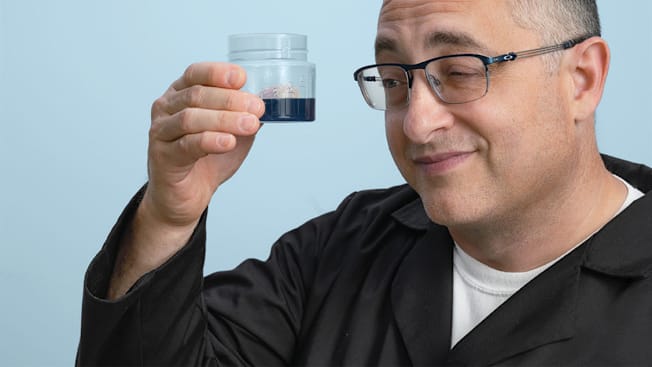
Photo: Chris Buck Photo: Chris Buck
You Don’t Need a Dozen Cycles
Most of the time, your machine’s “normal” cycle is just fine. Use the “delicate” setting for sweaters or fancy stuff. If you’re washing comforters and pillows and your machine has a bedding cycle, use that. It usually adds an extra rinse to help remove all the detergent from bulky items. And if someone in the house is sick, you can use the sanitize cycle to kill germs. But for most situations, you don’t have to worry about the other cycles.
When It Comes to Water, Keep Cool
Some people don’t believe cold water can clean well, but at CR, we’ve found it gets clothes just as clean and can preserve items longer than warm or hot water. In fact, most modern detergents are designed for cold water, and at CR, we test them using cool water. It’ll also save energy. If it makes you feel better, you can use hot water when you need an extra germ-killing boost. Outside of that, chill out.
Not Everything Should Go in the Wash
Sneakers and baseball caps do not belong in the washer and dryer. Baseball caps might have cardboard in them, and if you put them through the wash, there’s a good chance they’ll come out looking like a soggy tortilla chip. Caps made without cardboard are more forgiving but can still come out misshapen. And sneaker adhesives can break down in the wash with the heat of the dryer. Wash sneakers by hand and air-dry. The same goes for delicates that say “hand-wash.” It’s just not worth the risk.
Ditch the Dryer Sheets
If your dryer has moisture sensors—and even if it doesn’t—skip the dryer sheets. They’re a waste of money. They can also leave buildup on the sensors over time, which can get in the way of the dryer detecting when laundry is dry. You could end up baking your clothes and wasting electricity. Or opening the door to a pile of damp laundry.
And while we’re at it, you should clean the sensors occasionally; a cotton ball with rubbing alcohol is all you need. They’re usually right inside the dryer, under the door. Look for thin metal bars, about 6 inches long. And while we’re on the subject: Clean the filter after you run a load. Every. Single. Time. You don’t want your dryer to become a fire hazard.
Fabric Softener Is a Waste of Money
I’ve said it before. I’ll say it again: Fabric softener is a waste of money. Not only that, it can actually cause problems. It can interfere with towel absorbency and, over time, build up on clothes and form a waxy film in the washing machine. If you like your clothes less breathable, your towels less absorbent, and your laundry coated in more mystery chemicals, go for it. Otherwise? Hard pass.
For the Dryer, Use the Automatic Cycle
Don’t know how long to leave your clothes tumbling in the dryer? Trust your machine; its automatic cycle knows when your clothes are actually dry. Dryers with moisture sensors do an even better job of this than those that just monitor the temperature. Regardless, don’t override the automatic cycle with some arbitrary “60-minute” guesswork, unless you enjoy shrinking your socks or running up your electric bill.
Read the Owner's Manual and the Care Labels
It’s not exciting, but the most important thing when it comes to getting laundry right is to read the owner’s manuals for your machines and look at the care labels for your garments. Sure, most people skip this step, but why be like most people? If you know the capabilities of your appliances and follow the care label on clothes, you can keep your stuff from being ruined and extend the life of your washer and dryer.
Don’t Get Fooled by Fragrance
I get it. That “fresh meadow” fragrance from your laundry detergent brings on nostalgia, memories of your mom’s laundry room. But what you’re smelling is just perfume masking the chemical soup underneath. Your sweet-smelling clothes are not any cleaner, and that added scent might be irritating to your skin. Look at it this way: If your clothes are clean, there should be relatively no smell, right? Except for whatever cotton smells like.
Top-Rated Washers, Dryers, and Detergents
Even I don’t have a magic wand that will make all your laundry challenges disappear. But our tests of hundreds of washers, dryers, and laundry detergents can help you find the products that will make doing laundry less of a hassle.
Below, members can view details about some of our top-rated front-load washers (if you must know, I’m partial to front-loaders), as well as two top-rated dryers (both gas and electric), and our top-scoring detergent. You can also find buying advice and additional options in our comprehensive coverage of washers, dryers, and detergents. Happy laundering!
Editor’s Note: This article also appeared in the November/December 2025 issue of Consumer Reports magazine.

















